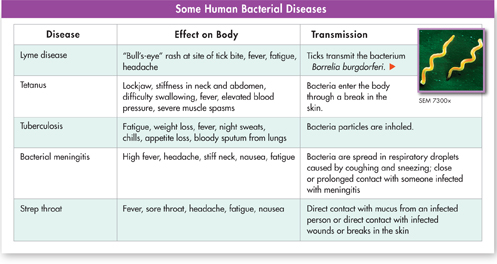
FIGURE 20–15 Common Human Bacterial Diseases Some common bacterial diseases are shown in the table above. Infer Why do bacterial meningitis outbreaks sometimes occur in college dormitories?
dBUILD Vocabulary
WORD ORIGINS Pathogen comes from the Greek words pathos, meaning “suffering,” and genes, meaning “produced.”
Controlling Bacteria Although most bacteria are harmless, and many are beneficial, the everyday risks of any person acquiring a bacterial infection are great enough to warrant efforts to control bacterial growth. Various control methods are used.
▸ Physical Removal Washing hands or other surfaces with soap under running water doesn't kill pathogens, but it helps dislodge both bacteria and viruses.
▸ Disinfectants Chemical solutions that kill bacteria can be used to clean bathrooms, kitchens, hospital rooms, and other places where bacteria may flourish.
▸ Food Storage Low temperatures, like those inside a refrigerator, will slow the growth of bacteria and keep most foods fresher for a longer period of time than possible at room temperature.
▸ Food Processing Boiling, frying, or steaming can sterilize many kinds of food by raising the temperature of the food to a point where bacteria are killed.
▸ Sterilization by Heat Sterilization of objects such as medical instruments at temperatures well above 100° Celsius can prevent the growth of potentially dangerous bacteria. Most bacteria cannot survive such temperatures.
 In Your Notebook Relate the methods for controlling bacteria listed above to your everyday life. Which methods have you used this week? Give specific details.
In Your Notebook Relate the methods for controlling bacteria listed above to your everyday life. Which methods have you used this week? Give specific details.

FIGURE 20–16 Pathogen Defense Hand washing is one of the most simple, inexpensive, and effective ways to prevent disease.
Table of Contents
- Formulas and Equations
- Applying Formulas and Equations
- Mean, Median, and Mode
- Estimation
- Using Measurements in Calculations
- Effects of Measurement Errors
- Accuracy
- Precision
- Comparing Accuracy and Precision
- Significant Figures
- Calculating With Significant Figures
- Scientific Notation
- Calculating With Scientific Notation
- Dimensional Analysis
- Applying Dimensional Analysis




